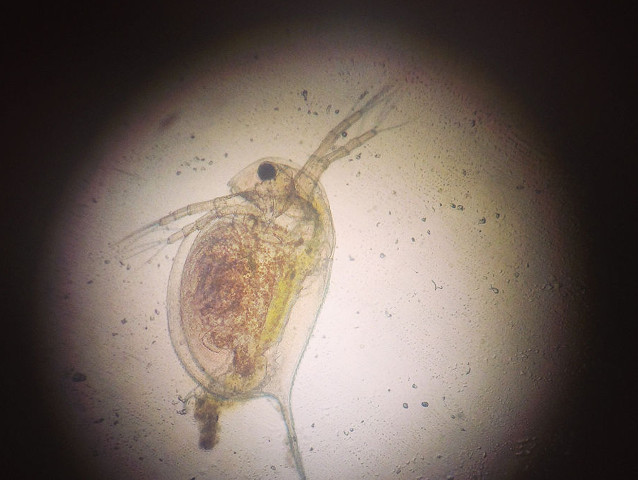Corresponding Author: John Drake, john@drakeresearchlab.com

When studying infectious disease dynamics, it is important to understand the factors that facilitate (or prevent) pathogen invasion into a host population. For example, host population density may affect the pathogen invasion threshold, or the level below which a pathogen is unable to invade a host population. Determining this threshold is important for horticulture, wildlife, and human disease control, but can be hard to measure in field populations due to insufficient data, lack of replicated trials, individual host ecology, and fluctuating environments. In a recently published study, CEID Director John Drake and colleagues combine an epidemiological model with a microcosm experiment, providing evidence of this pathogen invasion threshold using Daphnia, small planktonic crustaceans, and the transmission of a fungal parasite.They created replicate populations of varying host (Daphnia) densities and exposed each to the fungal pathogen. The results of their experiment support their epidemiological model on how parameter uncertainty can influence pathogen invasion probability. Overall, by combining replicated experiment trials with an epidemiological model, they were able to not only demonstrate this pathogen invasion threshold, but also justify their model predictions. This idea of supporting model predictions with experimental evidence is crucial to the effective study of infectious disease emergence and transmission.
Dallas, Tad A., et al. “Experimental evidence of a pathogen invasion threshold.” Open Science, The Royal Society, 1 Jan. 2018, rsos.royalsocietypublishing.org/content/5/1/171975.